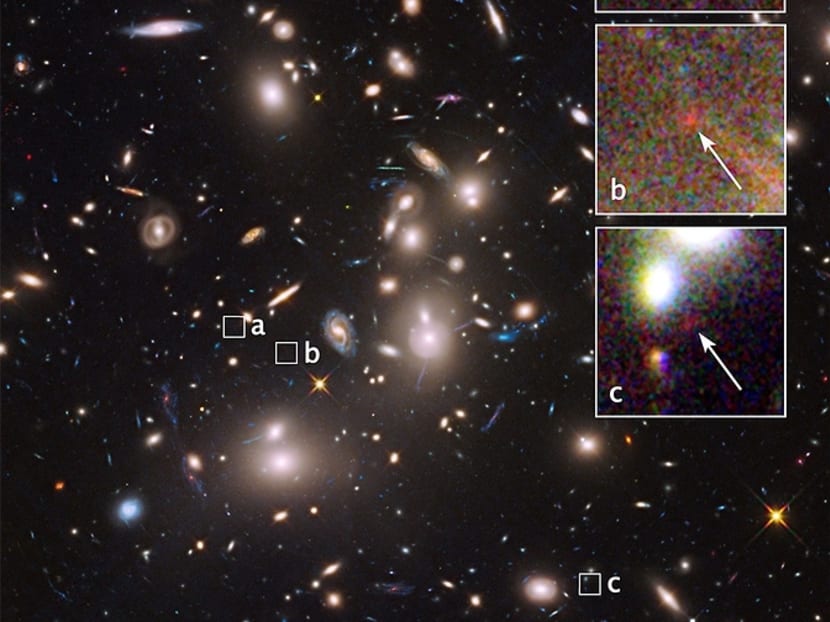Tiny galaxy 13 billion light-years away discovered
WASHINGTON — NASA has found a tiny galaxy nearly 13 billion light-years away from Earth, one believed to be about 500 times smaller than our Milky Way galaxy.

The mammoth galaxy cluster Abell 2744 is so massive that its powerful gravity bends the light from galaxies far behind it, making these otherwise unseen background objects appear larger and brighter than they would normally. Photo: NASA/J Lotz, (STScI)
WASHINGTON — NASA has found a tiny galaxy nearly 13 billion light-years away from Earth, one believed to be about 500 times smaller than our Milky Way galaxy.
The discovery was announced yesterday (Oct 16) on NASA’s website, and was spotted through the Hubble Space Telescope, a 24-year-old telescope orbiting earth.
“This galaxy is an example of what is suspected to be an abundant, underlying population of extremely small, faint objects that existed about 500 million years after the big bang, the beginning of the universe,” said study leader Mr Adi Zitrin of the California Institute of Technology in Pasadena, California.
The newly-discovered galaxy is estimated to measure merely 850 light-years across and have a mass of only 40 million suns. The Milky Way, in comparison, spans 500 times longer and has a stellar mass of a few hundred billion suns.
Mr Zitrin said that the galaxy was rapidly evolving. It produces one star every three years, an “extremely efficient” rate given its size, said Mr Zitrin.
The galaxy was detected under the Frontier Fields programme, a three-year effort to understand how the universe evolved by studying large galaxy clusters. Astronomers want to find out whether early galaxies could have provided enough radiation to warm the hydrogen that cooled soon after the big bang. This process is called reionisation and is thought to have occurred about 200 million to 1 billion years after the birth of the universe.
“We tend to assume that galaxies ionised the universe with their ultraviolet light. But we do not see enough galaxies or light that could do that,” Mr Zitrin said. So we need “to continue looking for them (other galaxies) and even fainter objects, so that we can understand how galaxies and the universe have evolved over time”, he added.





